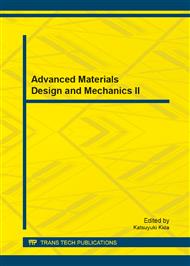p.381
p.387
p.392
p.398
p.402
p.406
p.410
p.416
p.420
A Study on Deviations of the Jet with Traverse Speeds on Different Materials in Pocket Milling Using Abrasive Water Jet Machining Process
Abstract:
The current trend in abrasive water jet machining process is getting focused on milling applications using this technique. Abrasive water jet machining (AWJM) process is a well defined process for cutting or part separation. The present paper reports on the geometry obtained in controlled depth milling process of different materials. The dimensions considered in this paper are the pocket depth and the change in the kerf profile. Experimental observations are made relating the kerf profile with traverse speed and the mechanical properties of the work piece material. Tool paths for obtaining the pocket of size 9 mm x 20 mm are generated in raster mode and machined using AWJM on materials of varying hardness and at different traverse speeds. It is observed that there is a significant change in the geometry of the kerf profile and also the depth of the pocket with speed in conjuction with the material hardness.
Info:
Periodical:
Pages:
402-405
Citation:
Online since:
August 2013
Authors:
Keywords:
Price:
Сopyright:
© 2013 Trans Tech Publications Ltd. All Rights Reserved
Share:
Citation:


